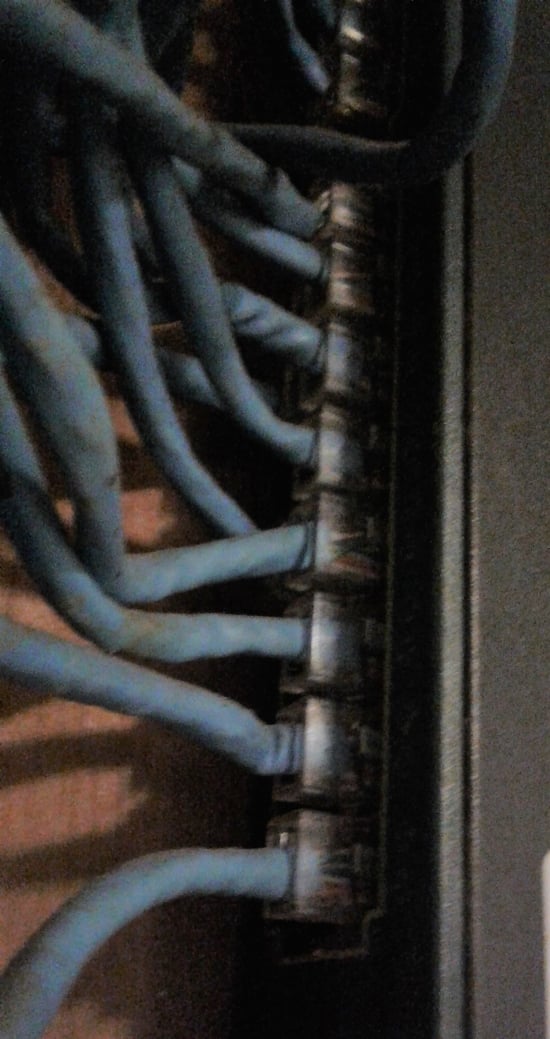
This week's photo caption: "What do you do when things start getting kinky in your office?" Welcome back to Tech Service Today's IT Disaster of the Week series where we showcase the ugliest IT environment our technicians ran into this week.
Before we focus on this week's disaster photo, let's talk about one of the most important attributes of copper cabling: The Twists.
The process of twisting the pairs of conductors (copper wires) inside Cat5/6 cable is what enables them to perform as they do. As the twist frequency increases (gets tighter), the performance also increases and crosstalk is reduced. While Category 5/5e and Category 6 cables are physically similar (in that they both contain 4-pairs of copper wires inside a cable jacket), Cat6 cables offer much higher performance and less crosstalk mainly because they have a higher twist frequency that Cat5/5e.
Any cable installer worth his or her salt knows that you need to be careful with how much you untwist the end of a cable when terminating it in a patch panel. Even if you are using the highest-rated Cat6 cabling available, if you untwist the end too much, it will have a negative impact on the cable's overall performance. In other words, twists are important!
But untwisting the end of a cable isn't the only way to alter the twist frequency of a cable and decrease its performance. This also happens when a cable is kinked.
When network cabling is first installed, it must bend to some extent in order to circumvent environmental obstacles and make changes in elevation. But those bends can not exceed the minimum bend radius (as defined by industry standards organizations), which refers to the smallest radius the cable is allowed to be bent without degrading performance. For Cat5/6 cables, the minimum bend radius is four-times the outside radius of the cable (or about 1-inch as a rule of thumb).
Sometimes it is difficult to visually identify a cable that was bent tighter than the minimum bend radius. But as this week's disaster photo shows us, there are also cases when cables have so clearly been bent, kinked and misused that even a blind person could identify them. And the cables in this picture degraded the performance of our customer's network pretty significantly until we came along and replaced them.
In conclusion, if you notice that some of your patch cables are getting kinky, then it's time to replace them with new cables...the kind that are only as twisted as you would expect them to be.
Check back every Friday for TST's latest IT Disaster of the Week photo
which represents one of the thousands of customer sites our technicians visit every year as they install and service IT, networking, and telecom equipment & cabling for our clients.
Click here to see last week's IT Disaster photo.
Do you already have an IT disaster that needs to be cleaned up?
It doesn't take a rocket scientist to install a network. But to ensure that your equipment, racks and cabling are installed properly in an organized, efficient fashion, it does require the talents of a skilled IT technician. If you need help installing or cleaning up your network, contact Tech Service Today to have a skilled, seasoned Technician dispatched to your site.
At Tech Service Today, We SIMPLIFY IT, SERVICE IT, and SOLVE IT.
Call TST when you need on-site technical services anywhere in North America, even same-day when time is of the essence.
Call (800) 973-2022 (option 1), or Email us at Service@TechServiceToday.com

